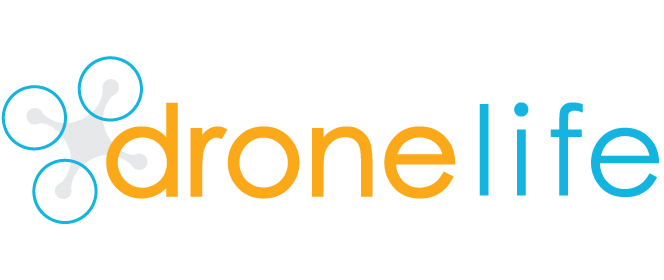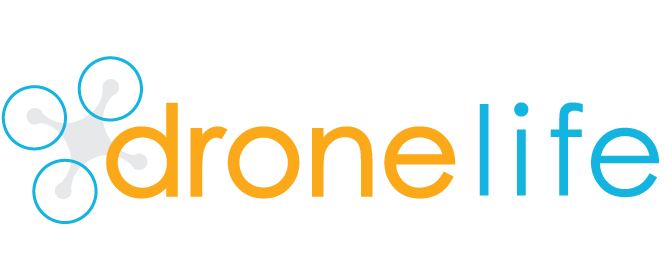
In a groundbreaking effort to enhance utility operations, PG&E is revolutionizing its approach with cutting-edge drone technology. The company recently hosted a conference, bringing together experts in the field and key stakeholders from various industries to explore the numerous applications of drones in utility operations. With a strong focus on safety and efficiency, PG&E has been at the forefront of utilizing drones for infrastructure inspections, gas pipeline leak surveys, and electric system inspections. By leveraging drone technology, the company aims to improve system reliability, reduce costs, and minimize environmental impact. This article explores PG&E’s innovative use of drones and its commitment to pushing the boundaries of utility operations.
Overview of PG&E’s Drone Technology
Introduction to PG&E’s use of drone technology
Pacific Gas and Electric Company (PG&E) has been at the forefront of leveraging drone technology in utility operations. Beginning with infrastructure inspections in 2015, PG&E significantly intensified its drone usage by 2020, showcasing their efficiency and productivity. Today, PG&E operates one of the largest and most advanced drone-based equipment inspection programs in the world.
Benefits of using drones in utility operations
The use of drones in utility operations offers numerous benefits. Firstly, drones allow for increased safety and reduced risk by eliminating the need for workers to physically inspect equipment in dangerous or inaccessible locations. Additionally, drones improve efficiency and cost savings by reducing manual labor and streamlining the inspection process. Moreover, the environmental impact of utility operations can be minimized through the use of drones, as they generate fewer emissions compared to traditional methods. Lastly, the integration of drones into utility operations helps to ensure regulatory compliance and manage public perception by providing transparent and efficient inspection processes.
Evolution of PG&E’s drone program
PG&E’s drone program has evolved significantly over the years. Initially starting with infrastructure inspections, the company expanded its use of drones to conduct gas pipeline leak surveys and electric system inspections. In collaboration with industry partners, PG&E also became the first utility in North America to string powerlines using drones. These advancements demonstrate PG&E’s commitment to innovation and its proactive approach to integrating drone technology into utility operations.
Applications of Drone Technology in Utility Operations
Infrastructure inspections
Drones have revolutionized infrastructure inspections in the utility industry. With their ability to access hard-to-reach areas and capture detailed imagery, drones provide a comprehensive view of the condition of utility equipment such as power poles, transformers, and transmission lines. This allows for timely identification of any maintenance or repair needs, reducing the risk of equipment failure and ensuring the reliability of the energy grid.
Gas pipeline leak surveys
Traditionally, gas pipeline leak surveys were conducted using boats to survey water crossings. However, PG&E has adopted drone technology to conduct these surveys more efficiently and cost-effectively. Drones equipped with specialized sensors can detect leaks and provide real-time data, allowing for prompt repairs and minimizing the risk of gas leaks.
Electric system inspections
PG&E has embraced the use of drones for electric system inspections, significantly improving efficiency and safety. Drones equipped with high-resolution cameras and thermal imaging sensors can identify hotspots and potential issues in power lines and substations. This enables proactive maintenance and reduces the risk of power outages and equipment failure.
Powerline stringing
PG&E has collaborated with industry partner Infravision to pioneer powerline stringing using drones. The Infravision TX UAV Stringing System allows for the rapid and efficient installation of powerlines in challenging areas where helicopters cannot operate. This alternative method is not only safer for workers but also more sustainable and cost-effective.
Collaborations with industry partners
PG&E has actively collaborated with industry partners, including Advexure, Airdata, Infravision, and Skydio, to explore and develop cutting-edge drone technology for utility operations. These collaborations have facilitated the sharing of knowledge, experiences, and best practices, driving innovation in the industry as a whole.
Advantages and Challenges of Drone Technology
Increased safety and reduced risk
The use of drones in utility operations significantly improves safety by minimizing the need for workers to perform dangerous tasks at heights or in hazardous environments. Drones can access hard-to-reach areas and perform inspections without putting human lives at risk.
Improved efficiency and cost savings
Drones offer increased efficiency and cost savings by automating inspection processes and reducing the need for manual labor. Traditional inspection methods often require workers to physically climb equipment or use heavy machinery, resulting in longer inspection times and higher costs.

This image is property of dronelife.com.
Environmental impact
By using drones instead of traditional inspection methods, utilities can minimize their environmental impact. Drones generate fewer emissions and require less fuel compared to helicopters or boats, reducing carbon emissions and contributing to a more sustainable energy industry.
Regulatory compliance and public perception
The integration of drones into utility operations helps ensure regulatory compliance by providing accurate and transparent inspection processes. Drones can capture detailed imagery and data, allowing utilities to demonstrate compliance with regulations and address any issues promptly. This transparency also helps manage public perception of utility operations and builds trust within the communities they serve.
Integration and Operation of Drones in Utility Operations
Best practices for safe and responsible drone integration
Utilities must establish best practices for the safe and responsible integration of drones into their operations. This includes developing standard operating procedures, conducting risk assessments, and ensuring that drone pilots are properly trained and certified.
Training and certification of drone pilots
Drone pilots must undergo specialized training and receive certification to operate drones in utility operations. This training ensures that pilots have the necessary skills and knowledge to safely operate drones and conduct inspections effectively.
Collaboration with federal stakeholders
Utilities must collaborate with federal stakeholders, such as the Federal Aviation Administration (FAA), to ensure compliance with regulations and obtain necessary waivers or permissions for drone operations. This collaboration helps establish a framework for safe and regulated drone operations in the utility industry.
Implementation of new technologies
As drone technology continues to evolve, utilities must stay updated on the latest advancements and explore new technologies that can further enhance their operations. This includes advancements in capabilities such as artificial intelligence and machine learning, automation, and autonomous flight.
Case Studies: Successful Implementation of Drone Technology
Case study 1: Infrastructure inspections
By using drones for infrastructure inspections, PG&E has significantly improved the efficiency and accuracy of its inspections. Drones equipped with high-resolution cameras and sensors can capture detailed imagery, allowing for prompt identification of any maintenance or repair needs.
Case study 2: Gas pipeline leak surveys
PG&E’s adoption of drone technology for gas pipeline leak surveys has revolutionized the way these surveys are conducted. Drones equipped with specialized sensors can detect leaks and provide real-time data, allowing for prompt repairs and minimizing the risk of gas leaks.
Case study 3: Electric system inspections
Drones have transformed electric system inspections for PG&E. With their ability to capture high-resolution images and thermal data, drones can identify potential issues in power lines and substations before they escalate, reducing the risk of power outages and equipment failure.
Case study 4: Powerline stringing
PG&E’s collaboration with Infravision to string powerlines using drones has showcased the efficiency and safety advantages of this alternative method. Drones can access challenging areas where helicopters cannot operate, allowing for the rapid installation of powerlines with minimal disruption.
Future Trends and Innovations in Drone Technology

This image is property of dronelife.com.
Advancements in drone capabilities
Drone technology continues to advance rapidly, with improvements in capabilities such as flight duration, payload capacity, and range. These advancements will further enhance the efficiency and effectiveness of drones in utility operations.
Integration of artificial intelligence and machine learning
The integration of artificial intelligence and machine learning into drone technology holds great potential for utility operations. AI-powered drones can analyze large amounts of data in real-time, enabling predictive maintenance and proactive identification of potential issues.
Automation and autonomous flight
Automation and autonomous flight capabilities are transforming the drone industry. Utilities can benefit from these advancements by implementing automated inspection processes and utilizing drones that can navigate predefined flight paths without direct human control.
New applications and potential industry collaborations
As drone technology continues to evolve, new applications and potential collaborations within the energy industry are emerging. Utilities can explore partnerships with technology companies and drone service providers to develop innovative solutions for specific operational challenges.
Regulatory and Legal Considerations for Utility Drone Operations
FAA regulations for drone operations
Utilities must comply with the Federal Aviation Administration’s (FAA) regulations for drone operations, including obtaining the necessary certifications and following airspace restrictions. Adhering to these regulations ensures safe and legal drone operations in utility environments.
BVLOS waivers and permissions
Operating drones beyond the visual line of sight (BVLOS) requires the appropriate waivers and permissions from the FAA. Utilities must work closely with federal stakeholders to obtain these waivers and ensure compliance with the specified operating conditions.
Privacy and data security
The use of drones in utility operations raises privacy concerns, as they can capture images and data from private properties. Utilities must establish protocols to protect the privacy of individuals and ensure the secure storage and handling of data collected during drone operations.
Liability and insurance coverage
Utilities must also consider liability and insurance coverage when incorporating drones into their operations. They should work closely with insurance providers to ensure that they have appropriate coverage for any potential incidents or accidents involving drones.
Impact of Drone Technology on the Energy Industry
Improving operational efficiency
The integration of drones into utility operations improves operational efficiency by streamlining inspection processes, reducing manual labor, and enabling proactive maintenance. This leads to cost savings and ensures the reliability and resilience of the energy grid.
Enhancing safety and risk management
Drones significantly enhance safety and risk management in the energy industry. By eliminating the need for workers to perform dangerous tasks at heights or in hazardous environments, drones minimize human risk and ensure the safety of personnel.
Reducing environmental impact
The use of drones in utility operations helps to reduce the environmental impact of traditional inspection methods. Drones generate fewer emissions and require less fuel, contributing to a more sustainable energy industry and reducing carbon footprint.
Economic benefits and cost savings
The adoption of drone technology in utility operations offers economic benefits and cost savings. Drones streamline inspection processes, reduce manual labor, and minimize equipment downtime, resulting in increased operational efficiency and financial savings for utilities.
Public Perception and Acceptance of Utility Drone Operations
Educating the public about drone technology
Utilities must actively engage in public education initiatives to raise awareness and inform the public about the benefits and safety measures associated with utility drone operations. This includes conducting community outreach programs and providing information through various channels.
Addressing privacy concerns
To address privacy concerns, utilities must establish clear protocols and guidelines for drone operations. Transparency and open communication with the public about data collection, storage, and usage can help alleviate concerns and build trust.
Building trust and transparency
Building trust with the public is crucial for the acceptance of utility drone operations. Utilities should communicate openly about their drone programs, address any concerns or questions, and provide updates on the benefits and improvements resulting from the use of drones.
Engaging with local communities
Utilities should actively engage with local communities to understand their specific needs and concerns regarding drone operations. By involving the community in the decision-making process and addressing their feedback, utilities can foster a sense of collaboration and acceptance.
Conclusion
PG&E’s use of drone technology in utility operations has demonstrated the numerous benefits and advancements that can be achieved through their integration. From infrastructure inspections to powerline stringing, drones have revolutionized the way utilities operate, improving safety, efficiency, and cost savings. However, challenges such as regulatory compliance, privacy concerns, and public perception must be addressed to ensure the successful and widespread adoption of utility drone operations. Moving forward, the energy industry can expect continuous innovation and advancements in drone technology, shaping the future of utility operations.


